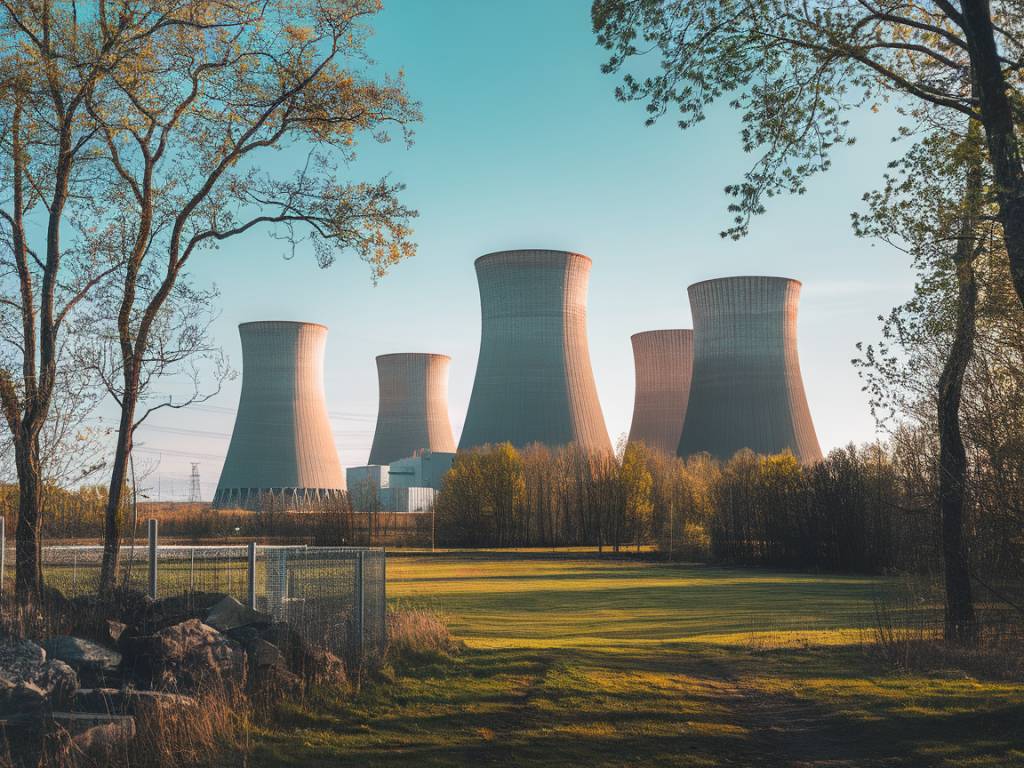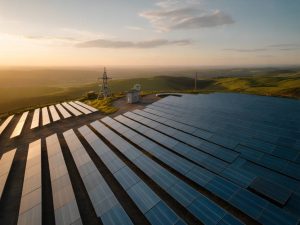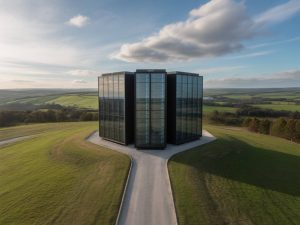The Myths Surrounding Nuclear Energy: Time to Set Things Straight
When it comes to discussions about green energy, nuclear power tends to be one of the most polarizing topics. While renewable energy sources like solar and wind take center stage in conversations about sustainability, nuclear energy remains overshadowed by misconceptions and skepticism. But is this justified? Could nuclear be the green alternative we’ve been overlooking? Let’s shatter a few myths and see where the truth lies.
Myth 1: Nuclear Energy Is Not Sustainable
One of the most common misconceptions is that nuclear energy is not a sustainable option. People argue that it relies on uranium, which is a finite resource. However, the reality is a little more nuanced.
For starters, uranium is incredibly energy-dense. A small amount of uranium can produce massive amounts of energy, far outstripping what fossil fuels can achieve. Moreover, new technologies like breeder reactors and thorium reactors have the potential to extend fuel supply by recycling nuclear waste or using alternative fuel sources. In essence, we’re improving efficiency and reducing dependency on limited uranium reserves.
So, while uranium may not be infinite, advancements in nuclear technology make it a far more sustainable option than many assume.
Myth 2: Nuclear Energy Is Unsafe
When many people hear « nuclear, » they think of disasters like Chernobyl or Fukushima. While these events were undeniably serious, they represent outliers rather than the norm. Today’s nuclear energy industry is built on rigorous safety protocols and state-of-the-art engineering.
For example, modern reactor designs, like Small Modular Reactors (SMRs), have fail-safe mechanisms that automatically shut the system down in case of anomalies. These reactors operate with passive safety systems that don’t require human intervention to prevent accidents.
Furthermore, consider this: the World Health Organization has estimated that air pollution from burning fossil fuels kills millions of people every year. Nuclear power, on the other hand, has one of the lowest mortality rates per unit of energy produced. It’s not just safe—it’s one of the safest energy sources we have.
Myth 3: Nuclear Energy Creates Too Much Waste
The question of nuclear waste often dominates the conversation, and it’s understandable. The idea of radioactive waste lingering for thousands of years is unsettling. But here’s where the narrative often overlooks key details.
Firstly, the volume of nuclear waste produced is actually quite small. All the nuclear waste ever produced globally would only fill a football field about 10 meters deep. Secondly, a significant portion of this waste can be recycled and reused as fuel in advanced reactors.
Better yet, ongoing research is exploring methods to neutralize long-lived radioactive isotopes in waste, reducing their environmental impact over time. In comparison to the carbon emissions and toxic byproducts generated by coal or natural gas, nuclear waste is a relatively manageable issue.
Myth 4: It’s Too Expensive to Be a Viable Option
Another argument against nuclear energy is that it’s prohibitively expensive. Yes, the upfront costs of building nuclear reactors can be high, largely due to stringent safety regulations. But let’s dig a little deeper.
Once a nuclear plant is operational, it produces energy at a remarkably low cost. Fuel costs are minimal compared to fossil fuels, and nuclear plants are designed to operate for 40-60 years, offering decades of consistent energy output.
Additionally, governments and private enterprises worldwide are investing in innovative reactor designs that aim to cut costs while maintaining safety. For example, SMRs, mentioned earlier, are cheaper to build and can be deployed more flexibly than traditional large reactors. With economies of scale and technological advancements, nuclear energy is becoming increasingly competitive.
Myth 5: Renewables Alone Can Meet Global Energy Demands
It’s easy to envision a future where solar panels and wind turbines generate all the energy we need, but the reality is far more complex. The intermittency of renewable sources—think cloudy days or calm wind conditions—creates a significant challenge for energy reliability.
Nuclear energy, on the other hand, provides a stable and consistent energy supply. It operates 24/7, regardless of weather conditions, making it an ideal complement to renewables. In fact, many experts argue that a combination of renewables and nuclear energy is the most practical path to achieving net-zero emissions without compromising energy security.
Why Nuclear Deserves a Second Look
So, why does nuclear energy continue to get such a bad rap? Perhaps it’s because misconceptions are hard to break. But if we truly want a sustainable and carbon-neutral future, we can’t afford to dismiss nuclear energy based on myths and outdated narratives.
Imagine a world where nuclear power works hand-in-hand with renewables to provide clean, reliable, and abundant energy. With advancements in technology, this vision is becoming increasingly tangible. Isn’t it time we reconsidered our stance?
Final Thoughts: Get Curious, Not Complacent
Breaking myths isn’t just about changing opinions; it’s about inviting curiosity and exploration. When it comes to nuclear energy, the line between fear and fact often feels blurred. But as innovations continue to redefine what’s possible, it’s clear that nuclear deserves a seat at the table in discussions about our energy future.
Questions, debates, and skepticism are all part of the journey. But let’s make sure we build our opinions on facts, not fears. After all, the climate crisis won’t wait for us to get comfortable. Isn’t it time we embraced every tool at our disposal?






More Stories
L’essor des communautés énergétiques locales : vers une nouvelle gouvernance citoyenne de l’énergie
Powering Data Centers Sustainably: The Role of Renewable Energy in the Digital Age
Integrating Biophilic Design with Green Technology: A New Paradigm for Sustainable Living